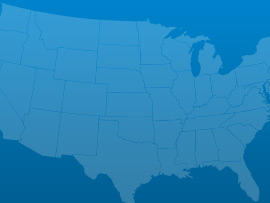Nevada will need nearly $5.6 billion over the next 20 years to maintain its drinking water systems and conserve valuable water resources. The current drought in the Western U.S. has been affecting water supplies within Nevada for a decade. Reduced snowfall in both the Sierra Nevada and Rocky Mountains results in low water flows into Nevada, and consequently the large reservoirs such as Lake Mead and Lake Tahoe are at historically low levels. In fact, Lake Tahoe is so low that very little water is being released into the Truckee River.
Larger communities have implemented strategic conservation efforts including seasonal or daily watering and turf limitations, which have greatly reduced per person water usage. In Southern Nevada, these conservation efforts have reduced water usage per person by nearly 100 gallons per person per day since 2002. In the Truckee Meadows region, residents use 15% less water per person than 10 years ago. Nevada is also placing more emphasis on water reuse, accounting for 40% of the water used in Southern Nevada.
Treatment and distribution facilities in the most populous counties, Washoe County and Clark County, are in fair to good condition. Funding in the larger metropolitan areas is adequate for the next 5 years. Conversely, Nevada’s rural areas face aging water infrastructure coupled with a lack of funding. Operation and maintenance plans may exist, but some are not able to be implemented due to monetary shortfalls and the difficulty with adjusting water rates.
Conservation efforts, including public education and sustainable infrastructure modernizations, and appropriate rates that reflect the true cost of water should continue to be pursued to allow the needs of current and future generations to be met. In rural communities, the availability of funding and resources will need to be addressed to stabilize systems and supplies across the state.
 Aviation
Aviation Dams
Dams Drinking Water
Drinking Water Flood Control
Flood Control Schools
Schools Solid Waste
Solid Waste Transportation
Transportation Wastewater
WastewaterA: Exceptional, B: Good, C: Mediocre, D: Poor, F: Failing, ?: Incomplete
Each category was evaluated on the basis of capacity, condition, funding, future need, operation and maintenance, public safety, resilience, and innovation
Aviation
30 public-use airports
Bridges
36 of the 1,853 bridges are structurally deficient
Bridges
$10.70 million in bridge funds came from the Federal Highway Bridge Fund in 2011
Dams
85% of the state regulated dams have an Emergency Action Plan
Dams
150 high hazard dams
Drinking Water
$5.6 billion in drinking water infrastructure needs over the next 20 years
Energy
4.444 gigawatt-hours of renewable energy every year, ranking it 23rd
Hazardous Waste
1 sites on the National Priorities List
Levees
103 miles of levees
Public Parks
$18.8 million of unmet needs for its parks system
Rail
2 freight railroads covering 1,192 miles across the state, ranking 39th nationally by mileage
Roads
4,085 of the state’s 38,567 public roads are major roads, and 2% are in poor condition
Roads
$417.0 million a year in costs to motorists from driving on roads in need of repair, which is $242 /yr per motorist
Schools
$2.5 billion in estimated school infrastructure funding needs
Transit
65.1 million annual unlinked passenger trips via transit systems including bus, transit, and commuter trains
Wastewater
$2.9 billion in wastewater infrastructure needs over the next 20 years

March 03, 2017
As the President’s repeated in his address to Congress his pledge to dramatically increase infrastructure spending to the tune of $1 trillion, various Congressional Committees

March 01, 2017
On Tuesday night, President Trump addressed a joint-session of Congress for the first time in his presidency. Infrastructure was among the many issues he discussed.

February 28, 2017
U.S. motorists set a new record for vehicle miles travelled (VMT) in 2016, driving over 3.2 trillion miles, an increase of 70 billion miles from

February 17, 2017
Romantic dates, the Grammy awards and celebrating black history are not the only milestones of this week; the Oroville dam crisis in California and the